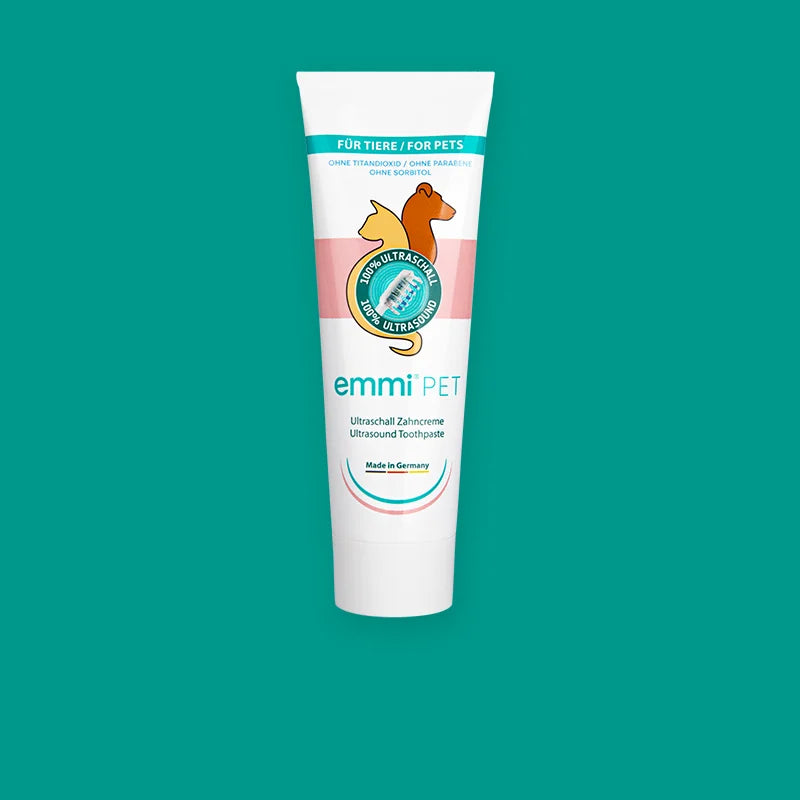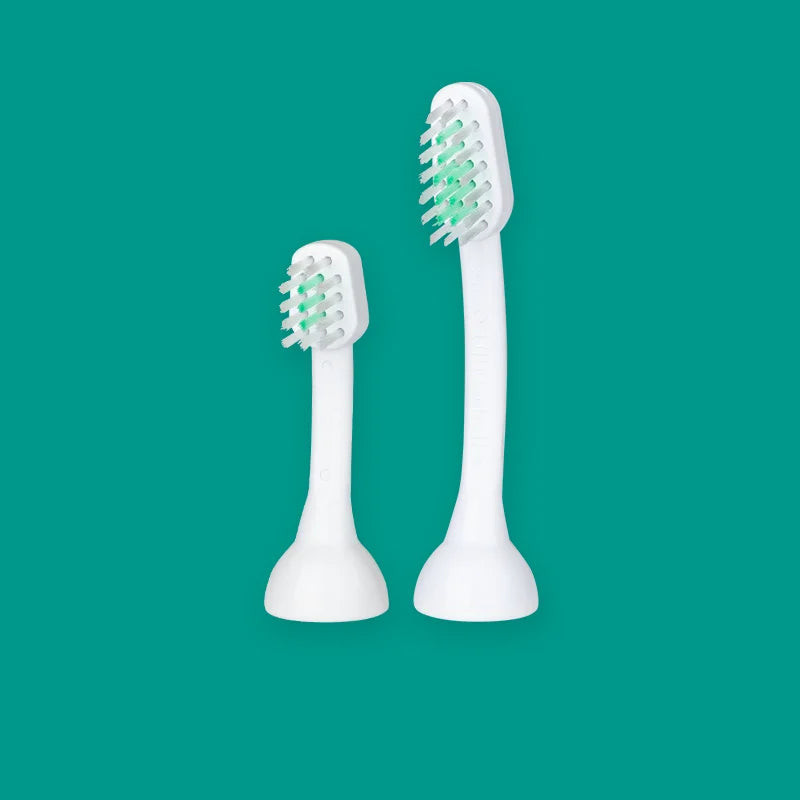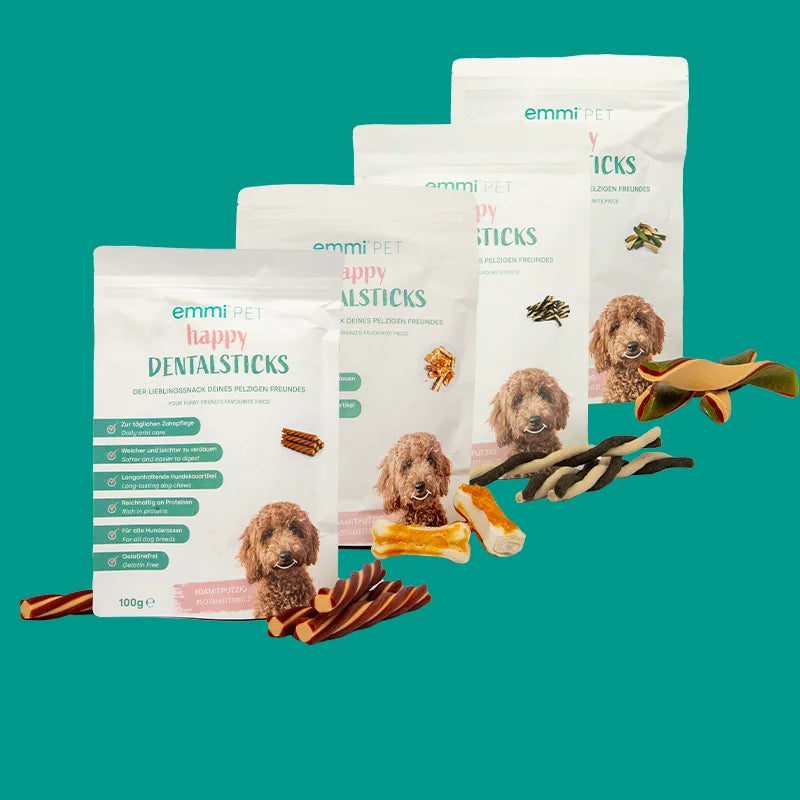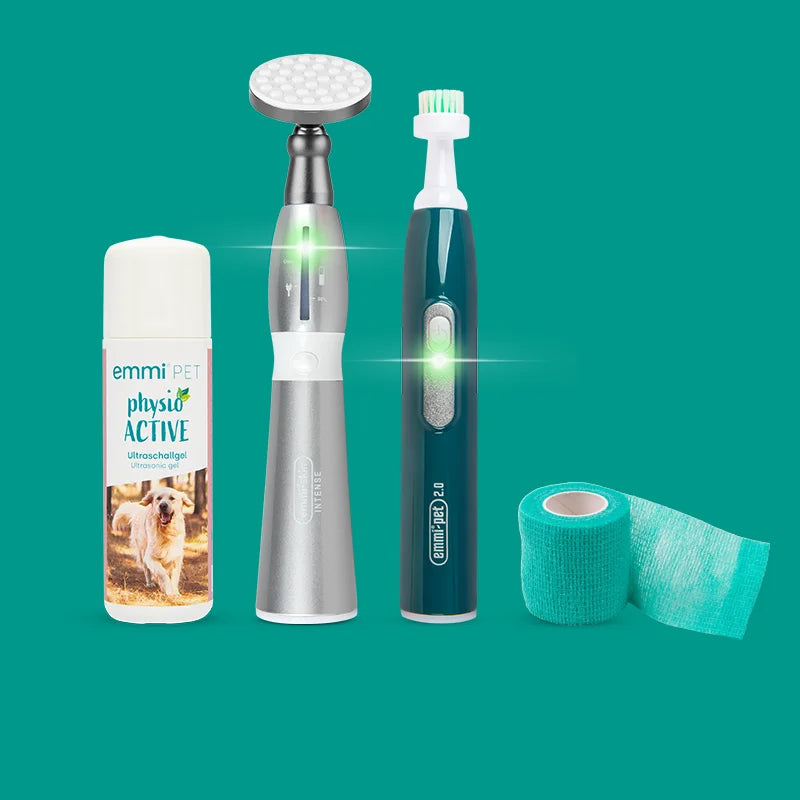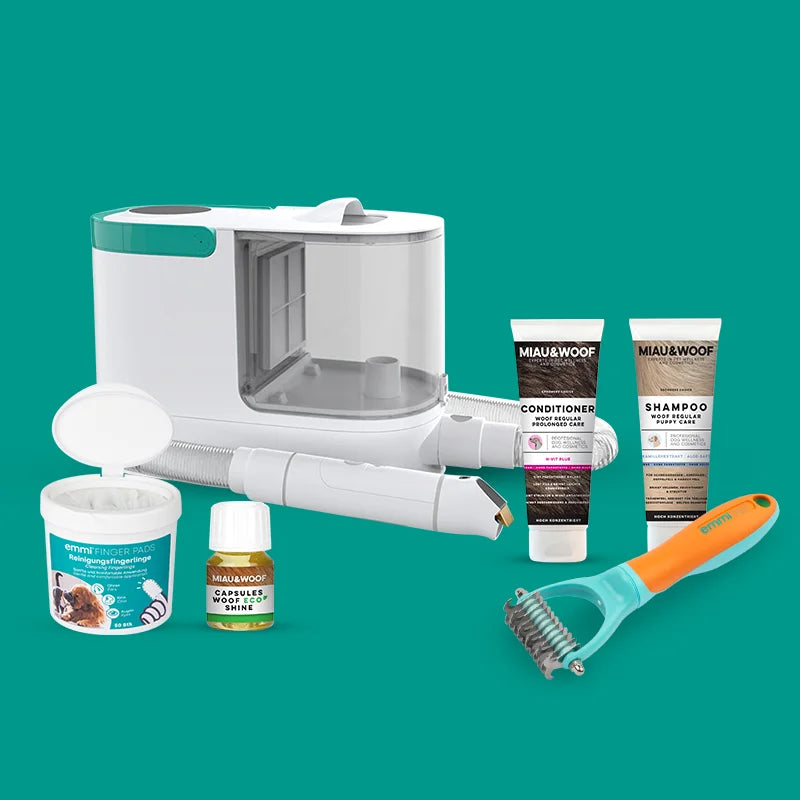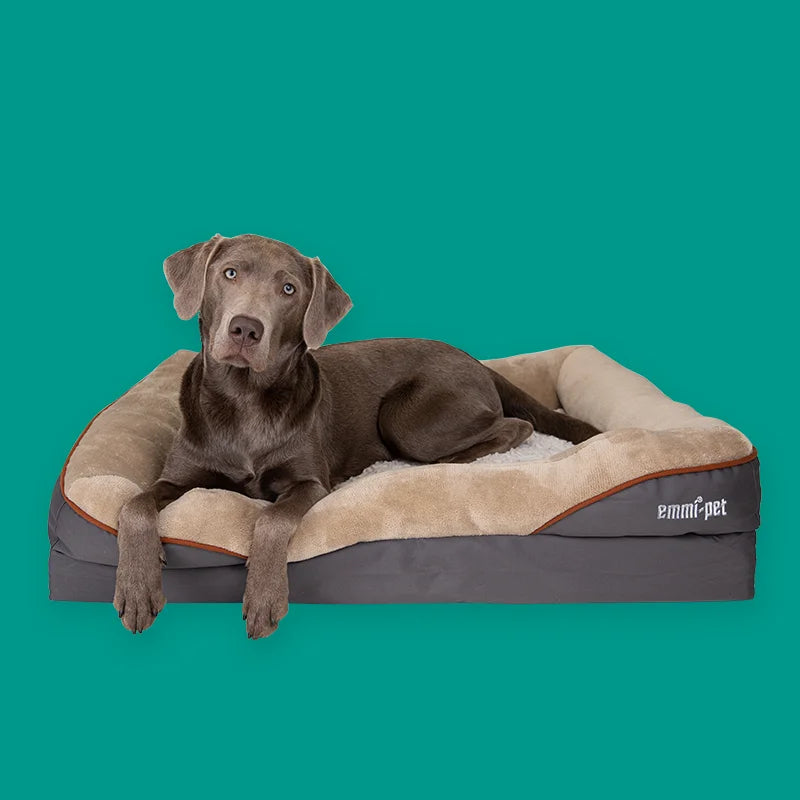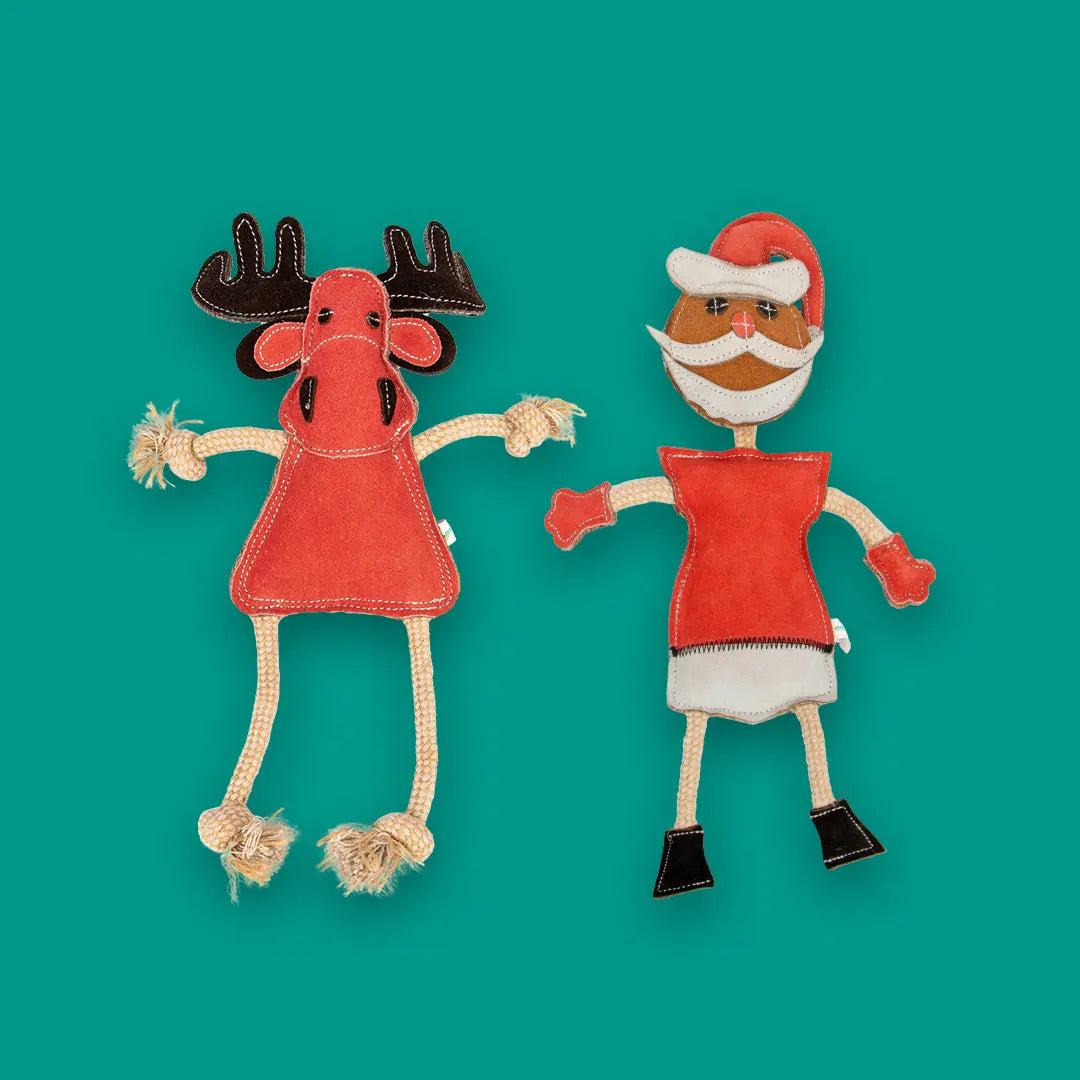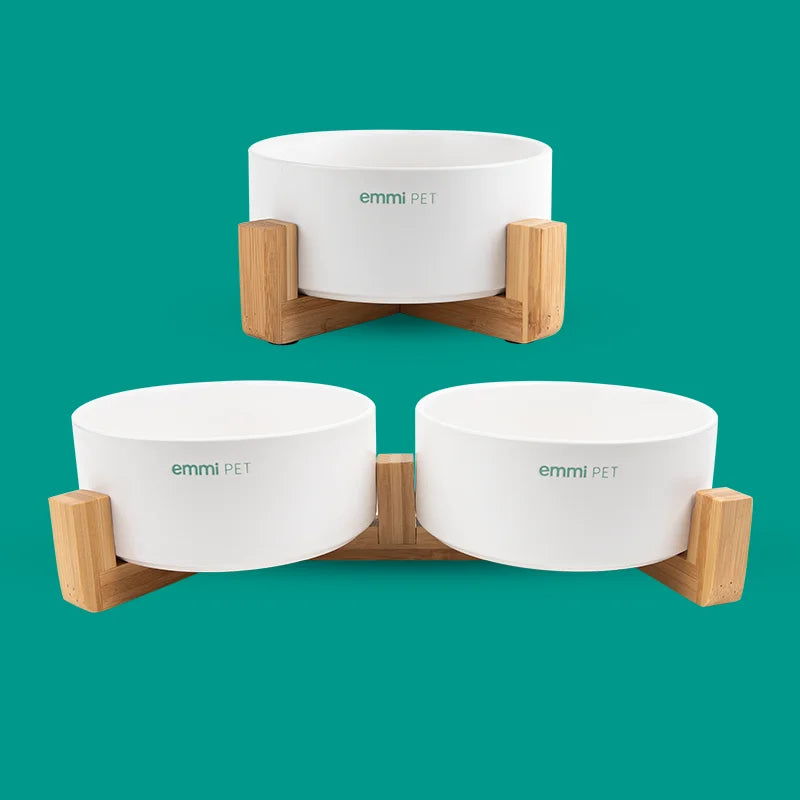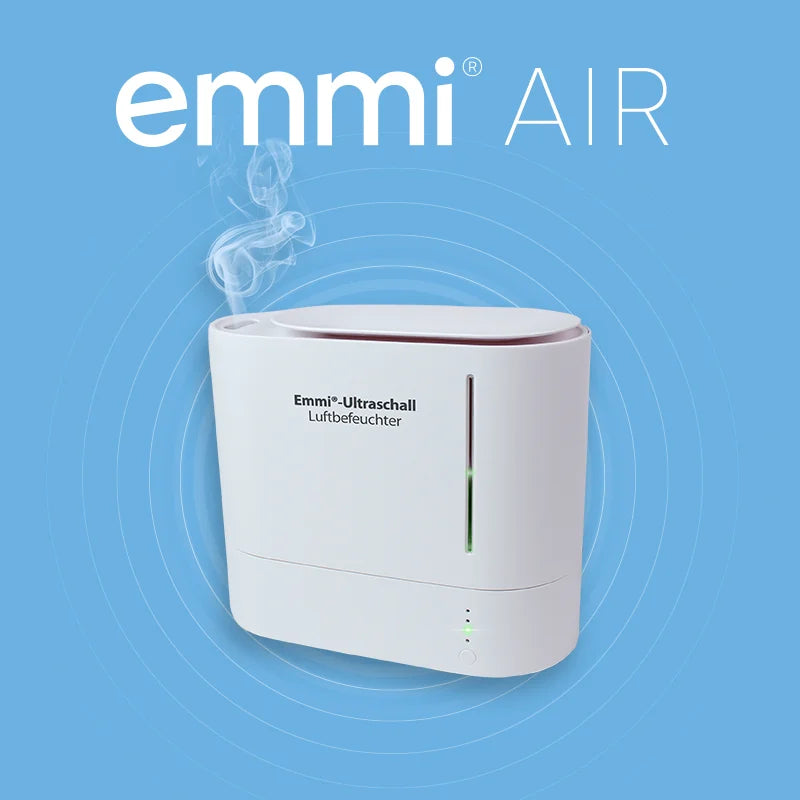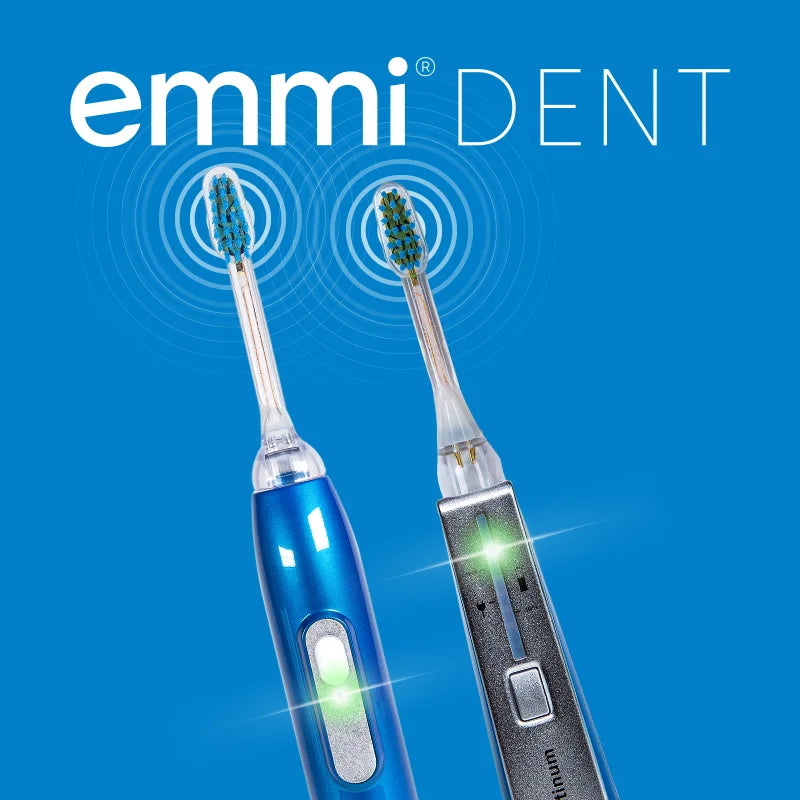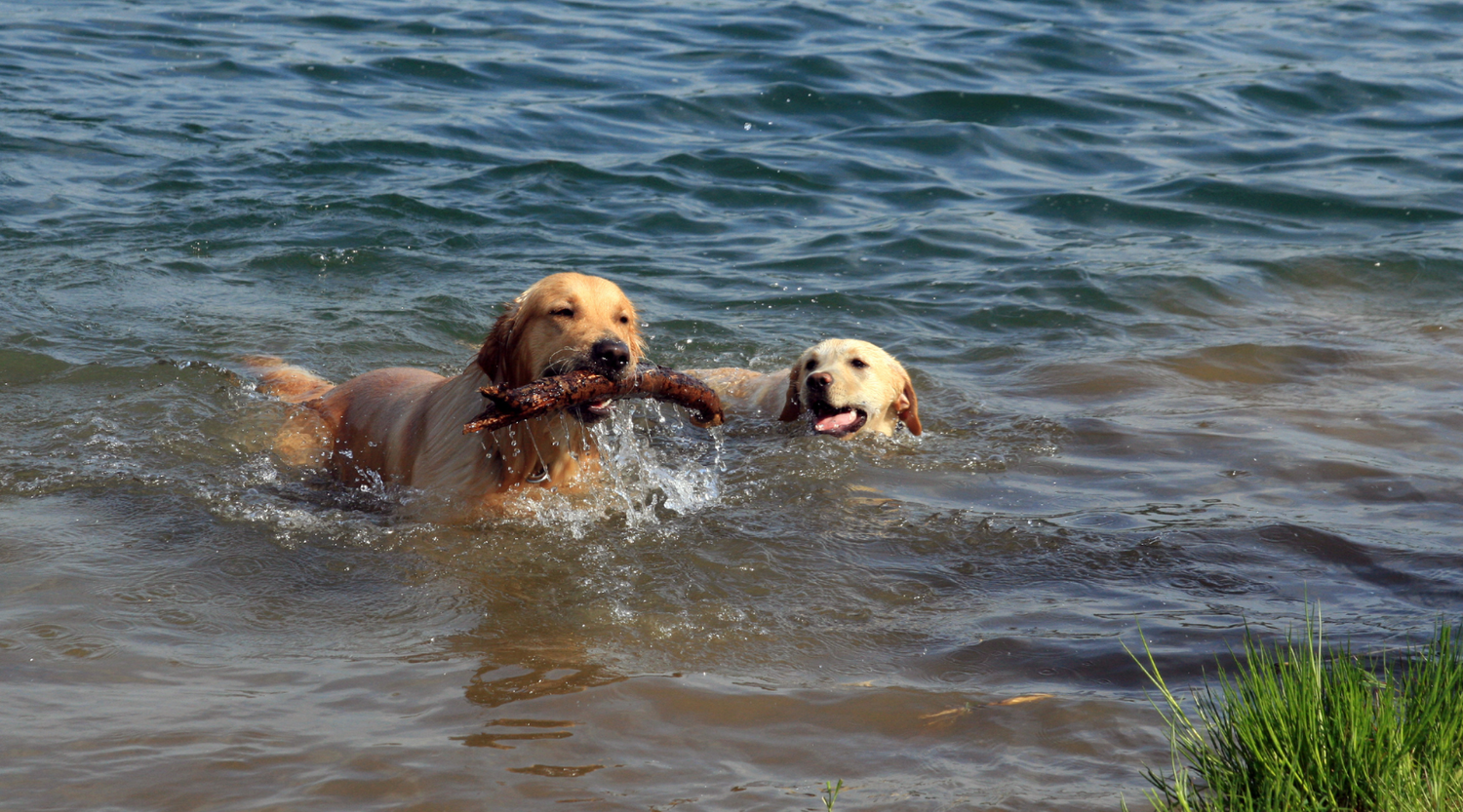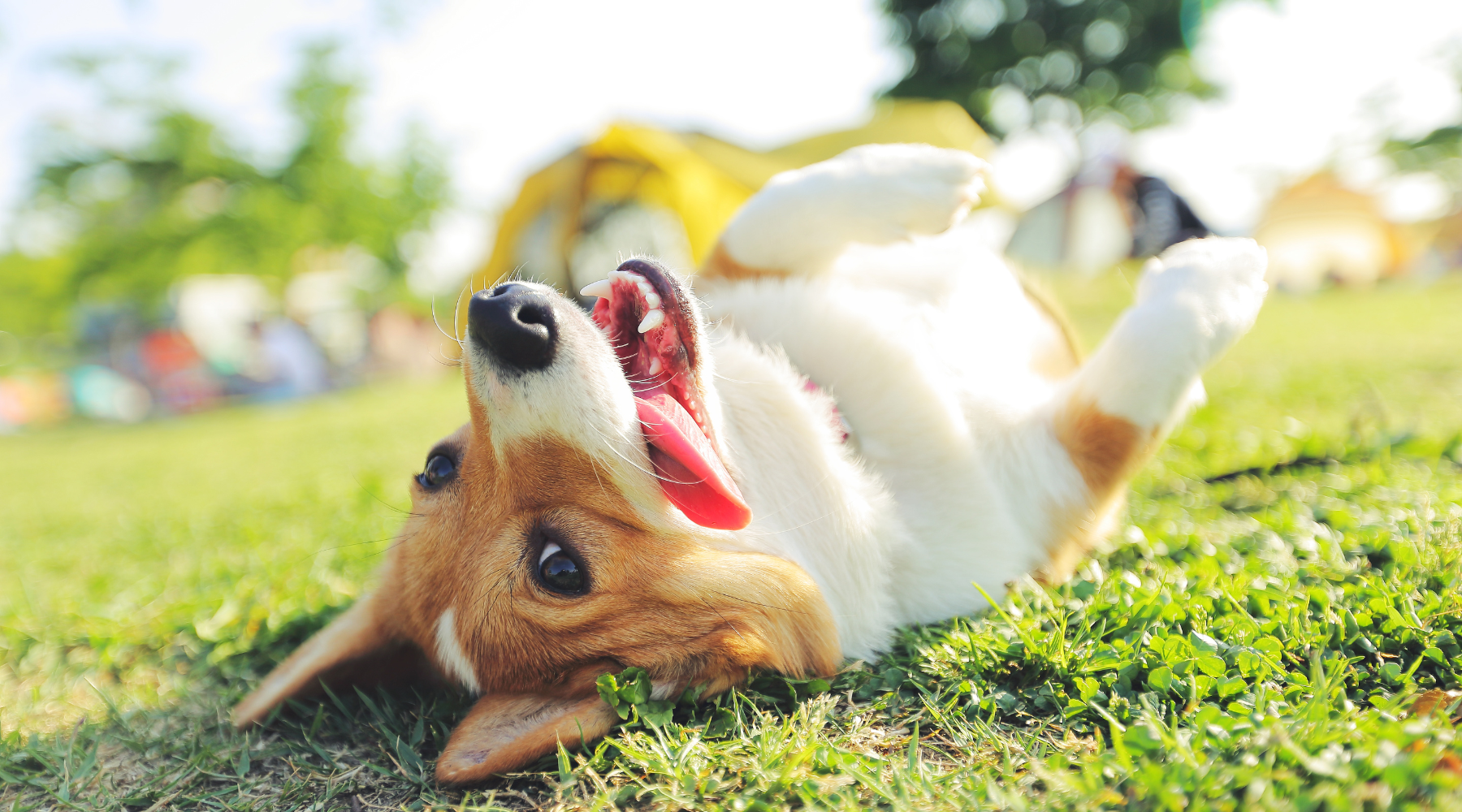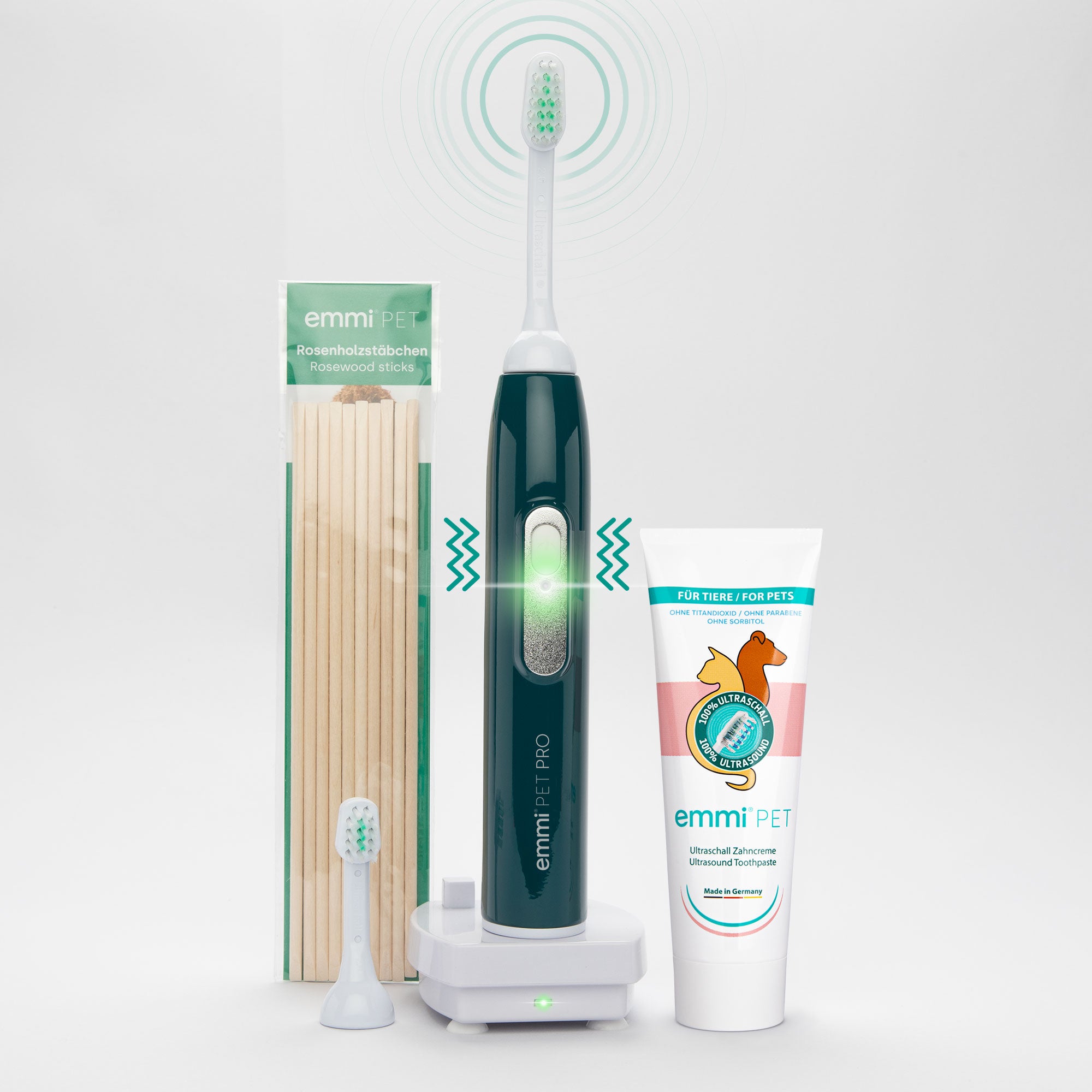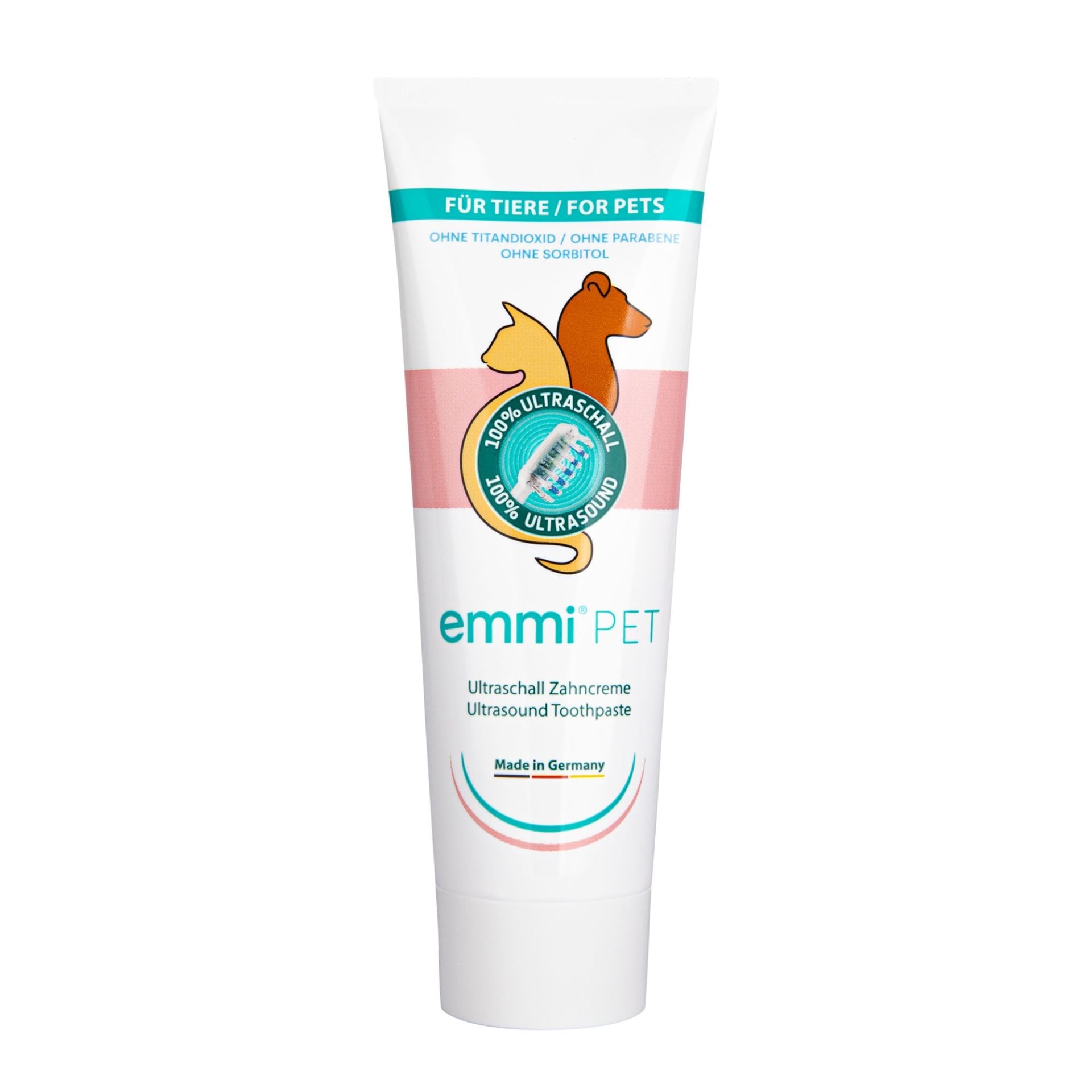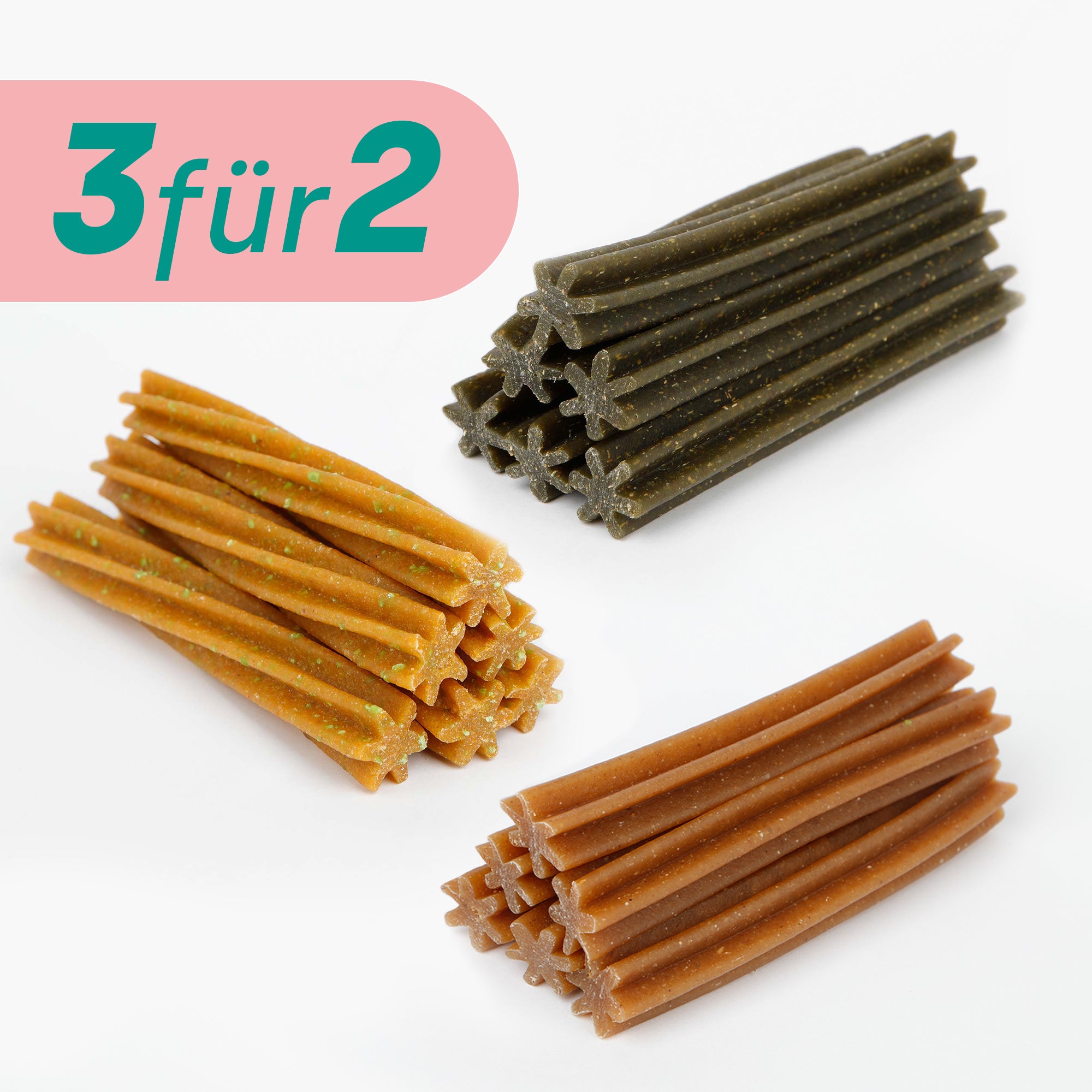<p><strong>When summer is in full swing and the sun is shining brightly, there is hardly anything better for many dogs than cooling off in the water.</strong> Whether it's splashing around in the garden pool, jumping into the lake, or chasing the water jet from the garden hose, these moments are not only <em><i>pure joy</i></em>, but also provide valuable exercise for the <em><i>body, muscles, and mind</i></em>.</p>
<p>But as carefree as summer swimming fun may seem, <strong>it harbors hidden risks that are easy to overlook</strong>. Your dog's mouth in particular often gets overlooked. <em><i>Teeth, gums, and tongue</i></em> come into contact with all kinds of particles and germs when romping in the water: <strong>sand, algae, bark mulch, small pieces of wood—and last but not least, bacteria</strong> that can settle in stagnant water or on toys.
<p><strong>In this article, you will learn</strong> how to ensure <em><i>specific healthy mouth hygiene</i></em> after playing in the water, what you should pay attention to – and how <strong>gentle and stress-free cleaning with the </strong><i>emmi-pet PRO ultrasonic toothbrush</i> helps your dog <em><i>carefree and healthy</i></em> throughout the summer.
<h2><span style="color: #3ba79d;"><strong>Why water fun can be a risk to dental health</strong></span></h2>
<p>At first glance, water seems refreshing and cleansing – <strong>a treat for body and soul</strong>, especially on hot days. But what we often forget is that water is not always as clean as it seems. Whether in the garden pool, in a stream, or when drinking from a puddle, many sources contain germs, algae, sand particles, or other suspended solids. These can easily end up in your dog's mouth when swimming, panting, or chewing on wet toys.
<p><strong>Dogs pant significantly more at high temperatures</strong> – and therefore take more water into their mouths. What seems harmless at first glance can be problematic on closer inspection: <strong>Tiny foreign bodies can accumulate on the tongue or between the teeth</strong>, where they can cause <strong>micro-injuries</strong>, <strong>irritation of the gums</strong> or even <strong>inflammation</strong> without being noticed.
<p>An additional risk factor: <strong>rough play with sticks, balls or chew toys</strong> – often in combination with sand or damp earth. What is great fun for dogs is hard work for their teeth: <strong>fine friction and invisible dirt particles</strong> can attack the tooth surfaces, promote small cracks or reinforce existing plaque – <em><i>if not carefully cleaned.</i></em></p>
<h2><span style="color: #3ba79d;"><strong>Typical stresses on a dog's mouth during water play</strong></span></h2>
<p>Summertime is when many dogs enjoy playing in the water the most – but all that splashing around also has its pitfalls. The mouth in particular is exposed to numerous stresses during such activities, which are easily underestimated. Here is an overview of the typical risks that can affect your dog's oral health during swimming adventures:</p>
<ul>
<li>
<strong>Sand and small stones</strong><br>Fine particles can easily get into the mouth, especially in standing water, near the shore or on the beach. They can get stuck between the teeth or cause unpleasant friction when chewing.
<li>
<strong>Algae and suspended particles</strong><br>What looks harmless can become <em><i>surprisingly stubborn in the spaces between teeth and at the gum line</i></em>, especially in cloudy or slightly greenish water.
<li>
<strong>Bark mulch, sticks, and wood chips</strong><br>Often chewed on, spat out, and swallowed, these natural materials can cause <em><i>fine injuries to the palate</i></em> or irritate the gums.
<li>
<strong>Bacteria in warm water</strong><br>Germs multiply rapidly, especially in <em><i>stagnant puddles, unfiltered paddling pools or slowly heating pools</i></em>. If they get into the mouth, they can cause <em><i>inflammation or infection</i></em>.
<li>
<strong>Plastic toys with rough surfaces</strong><br>Cheap water toys in particular have <em><i>hard edges or porous surfaces</i></em> that rub against the tooth enamel. This can <em><i>promote tooth abrasion</i></em>, especially during intensive chewing or fetching.
</ul>
<p>If your dog loves water, it is also worth introducing them to swimming in a safe and targeted manner. This can not only strengthen their muscles, but also reduce the risk of injury. You can find tips on how to gently get your dog used to the water in the article: <a href="https://emmi-pet.de/blogs/emmi-pet/schwimmtraining-fur-hunde">“</a><a href="/en/blogs/emmi-pet/schwimmtraining-fur-hunde">Swimming training for dogs – How to teach your four-legged friend to swim safely”</a></p>
<h2><span style="color: #3ba79d;"><strong>What you should keep in mind after water fun</strong></span></h2>
<p>A quick look—and a little care after splashing around—can often make all the difference. Your dog's mouth is particularly sensitive on hot days. <em><i>With a mindful routine, you can reliably protect them from minor irritations and major problems.</i></em> Here are four simple but very effective tips for your everyday summer routine:</p>
<h3><span style="color: #3ba79d;"><strong>1. The two-minute check after every dip in the water</strong></span></h3>
<p>After swimming or splashing around, take a moment to check your dog's teeth, gums, and palate. Often, a quick glance is enough to spot any changes early on:</p>
<ul>
<li>Do you see any <strong>sand or dirt</strong> on their molars?</li>
<li>Is there a <strong>small twig, algae, or blade of grass</strong> stuck in their mouth?</li>
<li>Do their <strong>gums appear red or sensitive</strong> when you touch them?</li>
</ul>
<p>If you check regularly, you will develop a keen sense of <em><i>what is normal for your dog – and what is not</i></em> over time.
<h3><span style="color: #3ba79d;"><strong>2. Gentle cleaning with ultrasound – the perfect summer helper</strong></span></h3>
<p>Our <a href="/en/products/emmi-pet-pro-basis-set">emmi-pet PRO ultrasonic toothbrushes</a> are a valuable companion for just such occasions. <em><i>Silent, no pressure, no movement</i></em> – ideal for dogs that have just been playing, romping or splashing around and have not yet calmed down completely.
<p>The <strong>high-frequency vibrations</strong> of the ultrasonic technology remove even the finest particles and deposits – even from hard-to-reach interdental spaces. This works completely without stress, pulling or chewing.
<p>Just <strong>a short care cycle of a few minutes a day</strong> is enough to remove plaque, <em><i>prevent inflammation</i></em> and <strong>maintain the natural balance in the mouth</strong>.</p>
<p>You can find out how to use the ultrasonic toothbrush correctly step by step – especially for sensitive dogs – in the article:<span style="color: #3ba79d;"> </span><a href="/en/blogs/emmi-pet/optimal-use-of-the-emmi-pet-ultrasonic-toothbrush-for-dogs-and-cats">“Optimal use of the emmi-pet ultrasonic toothbrush for dogs and cats”</a></p>
<p>But as carefree as summer swimming fun may seem, <strong>it harbors hidden risks that are easy to overlook</strong>. Your dog's mouth in particular often gets overlooked. <em><i>Teeth, gums, and tongue</i></em> come into contact with all kinds of particles and germs when romping in the water: <strong>sand, algae, bark mulch, small pieces of wood—and last but not least, bacteria</strong> that can settle in stagnant water or on toys.
<p><strong>In this article, you will learn</strong> how to ensure <em><i>specific healthy mouth hygiene</i></em> after playing in the water, what you should pay attention to – and how <strong>gentle and stress-free cleaning with the </strong><i>emmi-pet PRO ultrasonic toothbrush</i> helps your dog <em><i>carefree and healthy</i></em> throughout the summer.
<h2><span style="color: #3ba79d;"><strong>Why water fun can be a risk to dental health</strong></span></h2>
<p>At first glance, water seems refreshing and cleansing – <strong>a treat for body and soul</strong>, especially on hot days. But what we often forget is that water is not always as clean as it seems. Whether in the garden pool, in a stream, or when drinking from a puddle, many sources contain germs, algae, sand particles, or other suspended solids. These can easily end up in your dog's mouth when swimming, panting, or chewing on wet toys.
<p><strong>Dogs pant significantly more at high temperatures</strong> – and therefore take more water into their mouths. What seems harmless at first glance can be problematic on closer inspection: <strong>Tiny foreign bodies can accumulate on the tongue or between the teeth</strong>, where they can cause <strong>micro-injuries</strong>, <strong>irritation of the gums</strong> or even <strong>inflammation</strong> without being noticed.
<p>An additional risk factor: <strong>rough play with sticks, balls or chew toys</strong> – often in combination with sand or damp earth. What is great fun for dogs is hard work for their teeth: <strong>fine friction and invisible dirt particles</strong> can attack the tooth surfaces, promote small cracks or reinforce existing plaque – <em><i>if not carefully cleaned.</i></em></p>
<h2><span style="color: #3ba79d;"><strong>Typical stresses on a dog's mouth during water play</strong></span></h2>
<p>Summertime is when many dogs enjoy playing in the water the most – but all that splashing around also has its pitfalls. The mouth in particular is exposed to numerous stresses during such activities, which are easily underestimated. Here is an overview of the typical risks that can affect your dog's oral health during swimming adventures:</p>
<ul>
<li>
<strong>Sand and small stones</strong><br>Fine particles can easily get into the mouth, especially in standing water, near the shore or on the beach. They can get stuck between the teeth or cause unpleasant friction when chewing.
<li>
<strong>Algae and suspended particles</strong><br>What looks harmless can become <em><i>surprisingly stubborn in the spaces between teeth and at the gum line</i></em>, especially in cloudy or slightly greenish water.
<li>
<strong>Bark mulch, sticks, and wood chips</strong><br>Often chewed on, spat out, and swallowed, these natural materials can cause <em><i>fine injuries to the palate</i></em> or irritate the gums.
<li>
<strong>Bacteria in warm water</strong><br>Germs multiply rapidly, especially in <em><i>stagnant puddles, unfiltered paddling pools or slowly heating pools</i></em>. If they get into the mouth, they can cause <em><i>inflammation or infection</i></em>.
<li>
<strong>Plastic toys with rough surfaces</strong><br>Cheap water toys in particular have <em><i>hard edges or porous surfaces</i></em> that rub against the tooth enamel. This can <em><i>promote tooth abrasion</i></em>, especially during intensive chewing or fetching.
</ul>
<p>If your dog loves water, it is also worth introducing them to swimming in a safe and targeted manner. This can not only strengthen their muscles, but also reduce the risk of injury. You can find tips on how to gently get your dog used to the water in the article: <a href="https://emmi-pet.de/blogs/emmi-pet/schwimmtraining-fur-hunde">“</a><a href="/en/blogs/emmi-pet/schwimmtraining-fur-hunde">Swimming training for dogs – How to teach your four-legged friend to swim safely”</a></p>
<h2><span style="color: #3ba79d;"><strong>What you should keep in mind after water fun</strong></span></h2>
<p>A quick look—and a little care after splashing around—can often make all the difference. Your dog's mouth is particularly sensitive on hot days. <em><i>With a mindful routine, you can reliably protect them from minor irritations and major problems.</i></em> Here are four simple but very effective tips for your everyday summer routine:</p>
<h3><span style="color: #3ba79d;"><strong>1. The two-minute check after every dip in the water</strong></span></h3>
<p>After swimming or splashing around, take a moment to check your dog's teeth, gums, and palate. Often, a quick glance is enough to spot any changes early on:</p>
<ul>
<li>Do you see any <strong>sand or dirt</strong> on their molars?</li>
<li>Is there a <strong>small twig, algae, or blade of grass</strong> stuck in their mouth?</li>
<li>Do their <strong>gums appear red or sensitive</strong> when you touch them?</li>
</ul>
<p>If you check regularly, you will develop a keen sense of <em><i>what is normal for your dog – and what is not</i></em> over time.
<h3><span style="color: #3ba79d;"><strong>2. Gentle cleaning with ultrasound – the perfect summer helper</strong></span></h3>
<p>Our <a href="/en/products/emmi-pet-pro-basis-set">emmi-pet PRO ultrasonic toothbrushes</a> are a valuable companion for just such occasions. <em><i>Silent, no pressure, no movement</i></em> – ideal for dogs that have just been playing, romping or splashing around and have not yet calmed down completely.
<p>The <strong>high-frequency vibrations</strong> of the ultrasonic technology remove even the finest particles and deposits – even from hard-to-reach interdental spaces. This works completely without stress, pulling or chewing.
<p>Just <strong>a short care cycle of a few minutes a day</strong> is enough to remove plaque, <em><i>prevent inflammation</i></em> and <strong>maintain the natural balance in the mouth</strong>.</p>
<p>You can find out how to use the ultrasonic toothbrush correctly step by step – especially for sensitive dogs – in the article:<span style="color: #3ba79d;"> </span><a href="/en/blogs/emmi-pet/optimal-use-of-the-emmi-pet-ultrasonic-toothbrush-for-dogs-and-cats">“Optimal use of the emmi-pet ultrasonic toothbrush for dogs and cats”</a></p>

